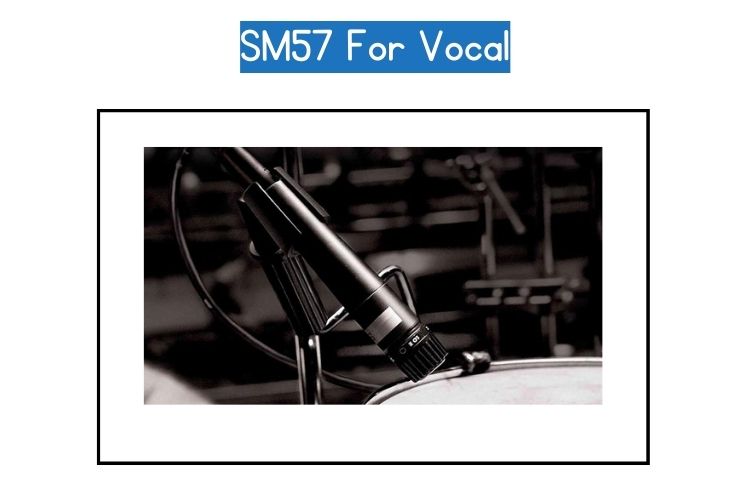With a history that goes as far back as 1925, Shure has made an almost unerasable mark in the world of audio. Over the years and after several innovations and technological evolutions, the name “Shure” has only become synonymous with top-class audio gears and equipment.
In every music studio or live stage, Shure microphones are almost like the holy grails of microphones. From the legendary and most coveted Shure SM7B to the tank-like and most handy SM57 and SM58, Shure microphones are always up for the task—regardless of how tough or simple.
Also, if we were to make a roll call of all the artists who have ever used a Shure microphone, it seems like the list will never come to an end. It seems like almost every popular musician has at a point in time used a certain Shure microphone for either vocals or instruments.
Loved, respected and coveted by many audio engineers and musicians of all styles and genres, Shure’s popularity undoubtedly is not only a result of some massive PR and marketing strategies (even though that also comes in).
The truth remains that Shure microphones are truly and exceptionally awesome. The same goes with the popular SM57 which is more like an older brother to the SM58. The SM57 is a cardioid dynamic microphone.
According to Shure, it was designed for musical instruments and this is exactly where it shines brightest. You can throw it on your acoustic guitar, hi-hat, kick drum, snare drum, guitar amp, and even your percussions and it will sound just great!
However, many people have also been wondering if you can also use the SM57 to record vocals, considering that it is a very versatile microphone. The simple answer is that you can do whatever you wish with your SM57, after all, you bought it with your money, but…
The SM57 was designed for instrument micing where a smaller grille size is always preferred. In situations like these, pop and wind are not usually a concern. However, the SM58 which is a vocal mic was designed for vocal application and it makes use of a ball grille that acts as an effective pop filter for vocal pops and plosives.
Apart from that, the Shure SM57 and SM58 microphones are technically based on the same cartridge design. The main difference lies in the grille design. That being said, in this article, we will take a deeper look at the “SM57 and vocal recording.” Just read on!
Table of Contents
About the Shure SM57 – Electronics and Design
The Shure SM57 is one of the most popular models in the series of dynamic microphones manufactured by Shure Inc. It is a dynamic cardioid microphone that has been in production since the mid-60s and is still in production today.
There is a single capsule and an internal preamp included in the microphone for better sound quality and tone control. SM57 is characterized by a relatively large diaphragm, making it capable of capturing sounds in the mid-to high-range.
Although the diaphragm is large, the overall size of the microphone remains small, which makes it extremely portable. The mic is also equipped with a small metal grille covering the mic’s diaphragm and two gold-plated 5-pin connectors used for attaching the mic to a guitar amp or PA system.
A (triangular) stand adapter is included with the SM57, enabling it to be used with a stand or tripod. Making it more versatile. The design of the SM57 includes a front-mounted pop filter, which can be removed if desired.
The mic’s low-frequency response is designed to cancel out unwanted sounds from below 40 Hertz; it improves the overall audio quality of the input signal.
Additionally, feedback protection circuitry helps to eliminate excessive noise during normal operation and protect the microphone from damage during power failure conditions (e.g. low battery).
The body build of SM57 is solid and well-constructed with metal. The microphone’s knobs, screws, and parts are all made of metal. The SM57 microphone comes with an all-metal stand adapter, as well as two cables.
This makes it very durable and capable of holding up for many years of use. The SM57 is also available in a chrome finish, but the black finish is still the standard.
Can You Use the Shure SM57 for Vocals?
The SM57 is not exactly a great choice for vocals especially if you are not planning on using pop filters. It can be used for certain vocal recording scenarios or micing situations. However, bear in mind that the SM57 was not designed specifically for vocals.
The SM57 is designed to deal with high-pressure sound that explodes from the amplifier and musical instruments. Regardless, the SM57 is one of the most used mics in the Whitehouse.
To date, every speech made in the Whitehouse since President Lyndon B. Johnson has been delivered through an SM57. The Shure SM57 is a dynamic mic. We also have musicians like John Lennon and others who use SM57 for vocal recording.
Some of these singers prefer to use the SM57 for vocal recording because of the tight and passable sound it offers.
The SM57 can isolate the vocals from other instruments on stage or in the studio, however, it has a slightly directional pickup pattern. It is also a great mic for loud singers due to its mid-range. It offers clear and detailed vocals.
This and much more aid the actuality that SM57 which was designed initially for instruments can be used for vocal recording. However, the Shure SM57 is not so great for vocals. There are a lot of things to consider if you must record with the SM57.
Why the SM57 is Not So Great for Vocals
There are many reasons why the SM57 is not so great for vocals. Yes, It is an awesome choice for instruments when set up correctly. The Shure SM57 will deliver great sound on a wide variety of instruments including acoustic guitars, bass, and drums.
When it comes to microphones, one of the determinant factors in regard to how well it performs is proximity to the singer. When a mic is too far away from the singer it will sound muffled and off-center, while a mic that is too close to the singer will sound too loud and squashed.
Now, the SM57 is not a very directional microphone. Even when angled off-axis it won’t sound very clear while singing. This is because the little metal grill around the capsule picks up more sound than the mic itself, so you may hear a lot of blurry “hash.”
Another downside of Shure SM57 is that it does not have a great deal of low-end. Meaning you have to place the mic at a fairly high angle so that you capture as much of your voice as possible.
Placing the mic too low will get you a much fuller low end. Which is a problem if you’re recording a large band or playing live. However this is not a very big issue if you are recording yourself, or if you’re in a small vocal booth in a studio.
While it may not be the most suitable mic for vocals, it is still a remarkable choice for the occasional vocalist who owns it and needs to record vocals.
If You Must Use the SM57 for Vocal, Do these! Tips and Hacks
Although the SM57 is not so great a mic for vocals, these are tips and hacks you can try out if the SM57 is what you have. The Good News is that the SM57 has a flatter frequency response which can serve as a perk for recording vocals.
A flatter frequency response is easier to mix, making the SM57 a more considerate mic to use for vocals with these few tips. Firstly, you will need to get an audio interface, a pop filter, and a DAW.
The audio interface is what you will use to connect the Shure SM57 to your computer. It will also allow you to control the gain turning it into a vocal mic. The pop filter will help reduce the ‘p’ and the ‘s’ in your recording. The pop filter is very important if you must record vocals with it.
Unlike other mics that have built-in pop filters or come with one, the Shure SM57 does not have a built-in pop filter or come with it as it was not designed for vocal recording.
You will also need a DAW (Digital Audio Workstation) to perform some basic mixing like compression and adding EQ. In most cases, the Shure SM57 will require some EQ to sound at its best if you are using it to record vocals.
Lastly, you will need to play around the distance between the mic to the mouth. The proximity of the singer to the mic will be a strong determining factor in regard to the sound you will get at the end of everything.
However, be careful while trying to figure out your distance, and also consider that the SM57 is more susceptible to proximity effect.
The recommended interval between the singer and the microphone should be between 2 and 12 inches from the face of the microphone. Also, you should place a pop-filter filter about 1 to 2 inches from the mic. Also, play around with the distance till you get something nice!
What is the SM57 Best Used for?
The SM57 is a dynamic stereo mic best used for both live performance and studio recordings. It is a versatile mic ideal for brass instruments, guitars (acoustic and electric guitars), pianos, strings, drums, and other percussion
The Shure SM57 is designed to capture the best sound for drums and other percussion. It is also capable of capturing the best sound for recording classical guitar, electric guitar, and other strings as well.
The Shure SM57 is also generally referred to as an industry standard for recording instruments. This industry-standard mic has been used to record numerous instruments in most of the popular songs you have heard.
It is also suitable for live sound recording and support due to its clean and bright sound. The Shure SM57 is also the mic used to deliver speeches in the Whitehouse by every president since 1965.
What Singers Use SM57?
The American band The Killers used the Shure SM57 to record Brandon Flowers‘s vocals in their debut album titled Hot Fuss.
Anthony Kiedis also used the Shure SM57 for his vocals. It was always his preferred microphone for both live and studio recording.
Other popular singers that use the Shure SM57 for vocal recording projects include John Lennon, Jack White, Madonna, David Bowie, Paul Rodgers, Raphael Saadiq, Tom Waits, Peter Gabriel, Wayne Coyne, Alice Cooper, Tom Petty, Erykah Badu, and Caleb Followill.
There are also popular songs such as “Greetings from Michigan” by Sufjan Stevens and, “For Emma, Forever Ago” by Bon Iver that the SM57 was used for tracking both vocals and instruments.
The SM58 And Other Alternatives for Vocal Recording
The SM58 is another popular mic that is designed by Shure specifically for vocals. It is probably used in almost all popular recordings. The Shure SM58 is the best alternative for vocal recording. It will deliver a distinct sound on vocals.
It is also the go-to microphone for a live setting. The Shure SM58 can also be used for studio recording, regardless. Another alternative for vocal recording apart from Shure SM58 is the Shure SM7B. The SM7B is another fantastic microphone from Shure.
The Shure SM7B is the industry standard for broadcasting. However, it has been used by very many notable singers. The Shure SM7B is another dynamic mic that produces a smooth, flat, and wide-range frequency response suitable for both music and speech.
Conclusion
The Shure SM57 is a dynamic mic that can be used for diverse recording both for live performance and studio settings. It is regarded as the industry standard for recording musical instruments ranging from drums, guitars, and brass instruments.
The SM57 responds extremely well to different placements. It also has the ability to capture sound without distortion. Now, if you are considering buying the Shure SM57 or maybe you have one already, then worry less.
With those aforementioned hacks and tips, you can record your vocals with the SM57. Nonetheless, you may conceivably not like the sound of the vocal you get recorded from the SM57.
If you fall here, you may want to consider other alternatives such as the SM58 and SM7B which are versatile and suitable for any genre. The industry standard Shure SM57 is an outstanding mic for musical instruments, Nonetheless, some popular singers have made hits with it.





